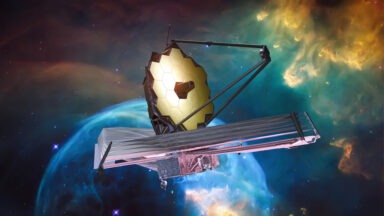Liquid Metal Brings Soft Robotics One Step Closer to Terminator 2

In 1991, Terminator 2 introduced us to a “soft” robot made from then-futuristic shape-shifting technology arrived from the future — seemingly impervious to all weapons.
The special effects were stunning; the morphing metal shone like chrome and flowed like water. Bullets passed through the self-healing material as if it were butter.
Fast-forward to March 2018. Researchers at the University of Sussex in England have applied electrical charges to “liquid metal” allowing them to manipulate the material into 2-D shapes — so far, simple numbers and letters.
A computer controls the electrical activity so that the metal is programmable and dynamic. Simple, but with far-reaching implications for the soft robotics field.
Professor Sriram Subramanian, project head, said,“Liquid metal technologies are an extremely promising class of materials for deformable applications. One of our long-term visions is a programmable liquid metal that changes the physical shape, appearance and functionality of any object through digital control to create intelligent, dexterous and useful objects that exceed the functionality of any current display or robot.”
While a liquid metal terminator androids are a good ways off, researchers are considering possibilities like re-programmable circuit boards and conductive ink.
“The compelling evidence of detailed 2D control of liquid metals excites us to explore more potential applications in computer graphics, smart electronics, soft robotics and flexible displays,” said Research Associate Yutaka Tokuda.
Scientists Are Now Using Sound Waves to Regrow Bone Tissue

The future of regenerative medicine could be found within sound healing by regrowing bone cells with sound waves.
The use of sound as a healing modality has an ancient tradition all over the world. The ancient Greeks used sound to cure mental disorders; Australian Aborigines reportedly use the didgeridoo to heal; and Tibetan or Himalayan singing bowls were, and still are, used for spiritual healing ceremonies.
Recently, a study showed an hour-long sound bowl meditation reduced anger, fatigue, anxiety, and depression, which is great news for mental health. But now, a new study out of the Royal Melbourne Institute of Technology in Australia, showed physical healing using sound waves.
Scientists used high-frequency soundwaves to turn stem cells into bone cells in a medical discipline called ’tissue engineering,’ where the goal is to rebuild tissue and bone by helping the body to heal itself.
The researchers shot sound waves at tissue cells for 10 minutes a day over the course of five days. This magnified image shows stem cells turning into bone cells after being treated with high-frequency sound waves.



































